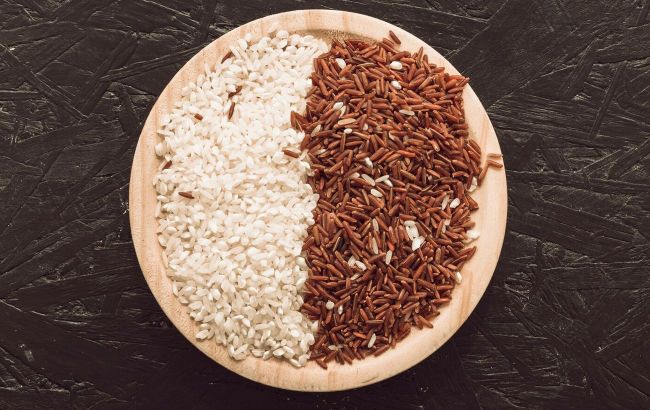White or brown: Which rice is more beneficial for health
 Illustrative photo (Freepik)
Illustrative photo (Freepik)
Rice has been a staple grain used by everyone for centuries in cooking. It stands out as one of the most versatile grains on the market due to its mild taste and fluffy texture. Brown rice is often marketed as healthier than white rice, but let's find out if this is really the case, citing Eat This, Not That!
Nutrient comparison
Despite the color difference, white and brown rice come from the same plant. The distinction between white and brown rice lies in the way they are processed.
Brown rice is classified as a whole grain, meaning it retains its bran and germ, which contain fiber, vitamins, and antioxidants. One of the concerns with consuming white rice instead of brown is that you lose the nutrients found in the bran and germ.
White rice, on the other hand, has the bran and germ removed, making it softer when cooked and easier to eat. Additionally, it requires less time to prepare.
Both white and brown rice have relatively similar nutritional values, being low in fat and high in carbohydrates. Brown rice, however, contains slightly more fiber—3 grams per cup compared to white rice, which has 2 grams.
Pros and cons of brown rice
In recent years, the benefits of incorporating whole grains into one’s diet have become widely known. Consuming brown rice is one of the simplest ways to include whole grains in your diet.
It has been shown that whole grains, like brown rice, can potentially lower blood sugar levels, reducing the risk of developing type 2 diabetes.
Brown rice also has a lower glycemic index than white rice. The glycemic index ranks carbohydrates based on their effect on blood glucose levels.
Fiber is an important nutrient for increasing satiety after a meal, which means feeling full and satisfied. It is also linked to healthy weight maintenance.
However, there are potential risks. Some varieties of brown rice may contain higher levels of inorganic arsenic, a toxic substance that could pose health risks if consumed in large quantities over time.
This risk can be minimized by varying your diet to include other whole grains. Additionally, because brown rice is less processed and more fibrous than white rice, some people may experience digestive discomfort.
It’s also important to note that brown rice contains phytic acid, which, while potentially beneficial, can interfere with the body’s absorption of zinc and iron. Soaking brown rice in water can help mitigate this issue.
About white rice
White rice contains fiber and nutrients such as B vitamins.
For example, 1 cup of cooked white rice provides about 21% of the daily recommended intake of niacin (vitamin B3).
One reason people may prefer white rice is that it is easier to digest than brown rice. This ease of digestion is due to the naturally low fiber content in white rice.
Additionally, white rice takes less time to cook than brown rice.
White rice may contain slightly lower levels of antioxidants than brown rice due to its processing. The antioxidants in brown rice may help prevent a range of chronic diseases.
Which to choose: brown or white rice?
There is no definitive answer to which type of rice is healthier. Both types come from the same plant, and the differences arise from processing.
White rice is a staple in many cultures around the world and is often included in various traditional dishes. Brown rice has a unique texture that pairs well with many foods. Both can be part of a balanced and healthy diet.
The key lies in what you pair rice with and your overall dietary choices.

